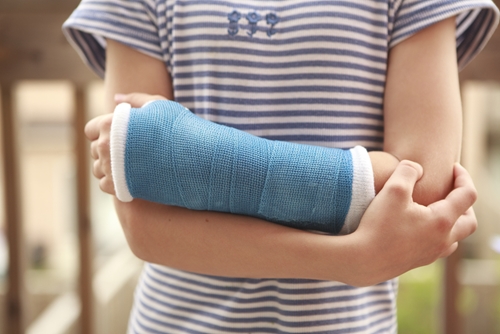Fractures in childhood could be a sign of poor bone health in the future
There are many benefits to electronic health records systems for orthopedic doctors. For example, these systems allow for greater care coordination among providers, which increases the chance that an orthopedic doctor will gain access to a patient's full and complete medical history. This is important, because knowing what health problems a person had as a child could impact his or her bone health in the future. For example, a recent study has found that certain types of bone fractures could say something about a child's long-term bone health.
While it is normal for children to break their bones, not all breaks are simply a part of childhood. Researchers from the Mayo Clinic found that children and adolescents who had forearm fractures that were the result of merely mild trauma had reduced bone strength compared to other children their age. This could mean that these kids have an increased risk of experiencing osteoporotic fractures later in life.
"Our study highlights the need for clinicians to consider the level of trauma preceding the injury, when treating children and adolescents who present with fracture," said Joshua Farr, Ph.D., a research fellow at the Mayo Clinic in Rochester and lead author of the study. "Fractures from moderate trauma appear more likely to occur in the setting of normal bone strength. But fractures resulting from mild trauma suggest an underlying skeletal deficit."
Farr added that the researchers cannot know for sure whether these fractures will lead to bone problems later in life, but these findings do suggest that doctors may want to keep a closer eye on kids who experience fractures as the result of minor trauma.
The researchers defined minor trauma as falling from a standing height, compared to falling from a moderate or high height, which would likely cause more serious fractures. There were 108 control participants and 115 boys and girls who had gone to the Mayo Clinic to be treated for distal forearm fracture. In order to determine bone strength, the children were given a more sophisticated version of a computed tomography scan known as a peripheral quantitative computed tomography.
The scientists found that children with mild-trauma distal forearm fracture seemed to have weaker bones than others, meaning that their bones were able to withstand less pressure before they would fracture. Furthermore, these children tended to have thinner cortical bone, which is an outer layer of bone tissue. During previous studies, the researchers had mailed questionnaires to participants and used their answers to determine what type of trauma the children had sustained.
The scientists added that these findings are part of the Mayo Clinic's increased focus on researching health issues that impact children. This focus has led to the development of the Children's Research Center at Mayo in Minnesota. Funding for this particular study came from the National Institute of Arthritis and Musculoskeletal and Skin Diseases and by Mayo's Clinical and Translational Science Award.
Examining broken bones in children
According to the American Academy of Pediatrics, children are more vulnerable to sustaining fractures because their bones are still growing. Providers may want to consider educating parents on how they can tell if their child has a fractured bone or if they do not require medical attention. The AAP explained that when children have a fracture, they typically cannot move the fractured body part. However, even if they can move it, that does not necessarily mean that everything is fine. Even if parents merely suspect that their children may have a fracture, providers should encourage them to bring them in to be sure.



